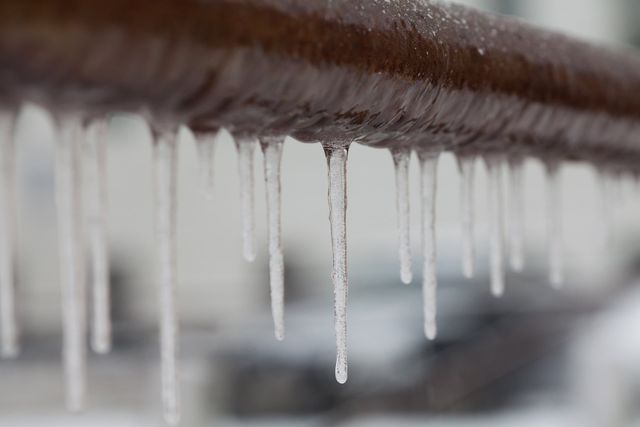The content in the next paragraphs pertaining to How to Prevent Frozen Pipes is really interesting. You should take a look.

All homeowners that live in warm environments should do their best to winterize their pipes. It is something you must do during autumn before deep wintertime absolutely starts. Failing to do so can spell catastrophe like icy, cracked, or burst pipes. Right here are some convenient winterizing hacks to keep your plumbing system safeguarded even if the weather outside is terrible.
Turn On the Faucets
When the temperature declines and also it seems as if the frigid temperature level will last, it will help to activate your water both inside and also outdoors. This will certainly keep the water moving with your plumbing systems. In addition, the activity will certainly slow down the freezing process. Significantly, there's no need to turn it on full force. You'll end up squandering gallons of water in this manner. Instead, aim for regarding 5 decreases per minute.
Open Up Cabinet Doors Hiding Plumbing
When it's chilly outside, it would be handy to open up cupboard doors that are masking your pipelines. Doing this tiny technique can keep your pipelines warm as well as restrict the potentially harmful results of freezing temperatures.
Require Time to Wrap Exposed Pipeline
One great as well as easy hack to warm up frigid pipelines is to cover them with warm towels. You can cover them initially with towels. After protecting them in position, you can put boiling water on the towels. Do it gradually to allow the towels soak up the liquid. You can additionally use pre-soaked towels in hot water, just don't fail to remember to use protective handwear covers to safeguard your hands from the warm.
Attempt a Hair Dryer or Heat Gun
When your pipes are practically freezing, your dependable hair dryer or warm gun is a blessing. If the warm towels do not assist dislodge any type of clearing up ice in your pipelines, bowling hot air directly into them might help. Nonetheless, do not make use of other items that generate direct flames like a blow torch. This can lead to a larger catastrophe that you can not regulate. You may end up harmful your pipelines while trying to melt the ice. And over time, you might also wind up melting your residence. So be careful!
When Pipelines are Frozen, close Off Water
If you notice that your pipelines are completely icy or nearly nearing that phase, turn off the major water valve promptly. You will typically discover this in your cellar or utility room near the heating system or the front wall closest to the street. Turn it off right away to avoid further damage.
With even more water, even more ice will stack up, which will ultimately lead to break pipes. If you are unsure about the state of your pipelines this winter season, it is best to call an expert plumber for an inspection.
All homeowners who live in warm climates have to do their finest to winterize their pipes. Failure to do so can mean catastrophe like frozen, cracked, or burst pipelines. If the warm towels do not help dislodge any kind of resolving ice in your pipes, bowling hot air straight into them may aid. Turn off the primary water valve right away if you see that your pipes are entirely frozen or virtually nearing that phase. With more water, more ice will pile up, which will eventually lead to break pipelines.
PREVENT YOUR PIPES FROM FREEZING THIS WINTER
A Leading Cause of Property Damage
When the weather is taking a deep nose dive into the cold dreary days, the risk of your pipes freezing and potentially bursting skyrockets. Unfortunately, during these cold dreary months, burst pipes are the most common denominator for property damage. The pipes that are most at the risk are those that are in areas where it is most cold in your home. For instance, pipes located in interior places such as basements, attics, and your garage. Unfortunately, that doesn’t mean that the pipes running through your cabinets or exterior walls can’t freeze. Good news, however, is that you can do things to help prevent pipes from freezing.
How to Prevent Pipes From Freezing
Once the temperature starts to drop during the winter, you should be taking the proper measures needed to ensure that your pipes stay warm and that there is circulation of water through them. Some steps that experts may recommend could go against your better judgement when it comes to saving water and heat. However, it would go without saying that when expenses are compared, damaged pipes could put a bigger dent in your wallet than a water bill.
What Can I Do?
- Keep your garage door closed. This is very important, especially if you have water supply lines running through your garage.
- Open your kitchen and bathroom cabinets to allow warm air to circulate through them.
- Allow air circulation throughout your home. Keeping the interior doors open will once again allow the warm air to circulate inside your home.
- Ensure your thermostat is running the same temperature throughout the night and day.
- If you plan to be away from home during the cold months, set your temperature no lower than 55° F. This should provide enough heat to keep the pipes warm and prevent any remaining water inside the pipes from freezing.
- For more of a long-term solution, add insulation to attics, basement, and other crawl spaces around your home.
- By allowing your faucet to drip, it will alleviate pressure in the system. This is important because the pressure that is created between the blockage and the faucet can potentially cause the pipes to burst. Allowing the faucet to drip will prevent the pressure from building up, therefore keeping the pipes from bursting.
- Seal any cracks, openings, and crawl spaces around your home to prevent cold air from coming inside. This keeps your pipes-not to mention your home-warmer and less susceptible to issues caused by freezing temperatures.
- For the pipes in your home that are easily accessible, applying electrical tape to them might prevent them from freezing over. This is a quick fix, as you can apply the tape directly to the pipe. There are two options for heating tapes. One turns on and off by itself when it senses heat is needed. The other type of heating tape needs to be applied when heat is needed and removed when not necessary. If you have exposed pipes in your home, you can check this website to take a look at a few options that would be available at a shop near you.

Do you really like reading up on How to Prevent Frozen Pipes? Try to leave a short review further down. We would be delighted to listen to your insights about this entry. Hoping that you come back again before long. If you liked our blog entry kindly make sure you remember to share it. Thanks for your time spent reading it.
Click For More Information
Comments on “Smart Approaches to Protect Your Plumbing in Chilly Temperatures”